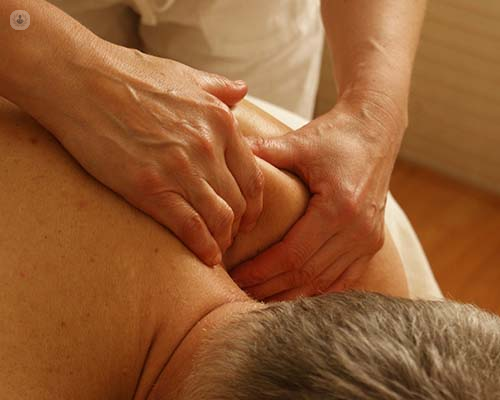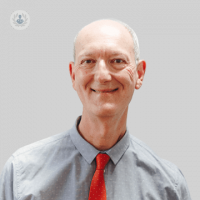Understanding the different types of spondylitis
Written by:Spondylitis literally means inflammation of the joints of the backbone. The most common form of spondylitis is due to osteoarthritis, or ‘wear and tear’ arthritis, and is therefore strictly speaking, not inflammatory at all. Spondylosis is the term used to describe osteoarthritis of the spine but it can be used to describe any manner of spinal degeneration.
We’ve asked leading Oxford Rheumatologist Dr Joel David to explain some of the common umbrella terms associated with spondylitis. Here he shares some of the possible arthritic conditions that may affect the neck, back and spine.

What is cervical spondylosis?
Cervical spondylitis refers to pain felt in the neck and is related to osteoarthritis. It is worse as one ages and is best treated with painkillers, physiotherapy and osteopathy or by a chiropractor. The more accurate term for this would be cervical spondylosis.
The most commonly affected areas are the lower vertebral junctions – usually between the fourth and fifth cervical vertebrae or between the fifth and sixth, and sixth and seventh vertebrae. Referred pain may occur down the arms. With the higher vertebrae, the radiation of pain may be to the head, which causes headaches.
What is lumbar spondylosis?
Lumbar spondylosis is osteoarthrosis affecting the lower back. The management is the same as that for the neck. Surgery is only reserved for a minority of cases where there is nerve damage or intractable pain. Pilate exercises are very important in keeping the muscles strong to support the neck or back.
What is ankylosing spondylitis?
True spondylitis, or inflammation of the joints in the spine, occurs in ankylosing spondylitis (AS). This is a form of autoimmune disease which usually presents in younger ages from teenage years to around mid-forties. It presents with stiffness and pain, which is worse in the mornings and improved with exercise. The sacroiliac joints, which are large joints between the lowest part of the spine (sacrum) and the pelvis, are usually affected.
The condition responds well to anti-inflammatories. A small proportion of patients with AS will need more intensive treatment with biologic drugs such as anti-TNF injections. AS is associated with a particular gene type (HLA B27) and this can be associated with psoriasis or inflammatory bowel disease (ulcerative colitis or Crohn’s disease) and does run in families. AS is slightly more common in men. If AS is treated early, then the outlook is excellent and patients can lead a normal life.
What is enthesitis?
The area where tendons or ligaments connect to the bone (called enthesis) may be inflamed such as in cases of tennis elbow or shoulder capsule inflammation. This is known as enthesitis, which is typical of this type of arthritis.
There may be extra-articular (other than joints) manifestations of AS. These include mild eye inflammation (iritis) and very rarely there may be heart or lung inflammation. Oral steroids are only very rarely used, but topical treatments such as steroid eye drops or local steroid injections can be very helpful.
Do not hesitate to book an appointment with Dr David if you're concerned about experiencing any joint inflammation and pain.


